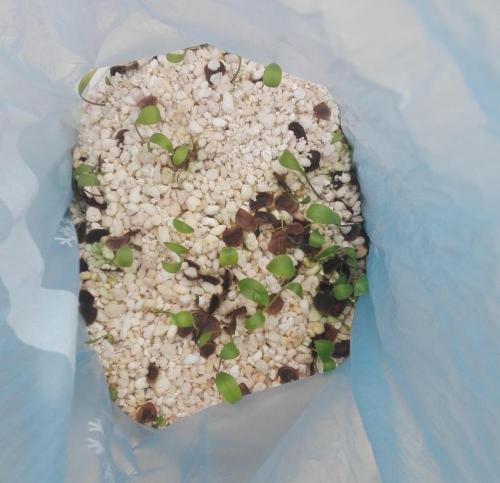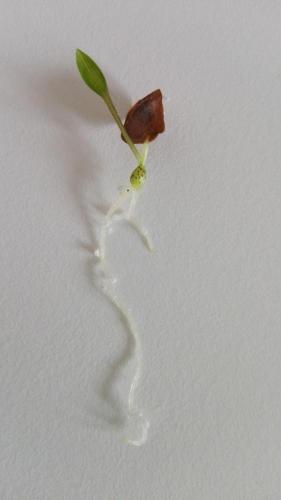Hello lily lovers,
I'm from the Czech Republic (central Europe) and I have constant problems with the care of oriental seedlings. I know that orientals are hypogeic and form a bulb underground in the first year. But since I didn't know how to take care of and how to water the bulbs that I can't see underground, I followed instructions from some article that I once read. It said that the time between sowing and the first flowering of orientals can be shorten by one year. According to the instructions, I sowed the seeds in a transparent plastic bag with perlite, which I continuously moistened, folding the top of the bag over to keep the moisture inside. I don't remember when I sowed, but the first leaves appeared in the summer (a year after I harvested the seed pods). The bag of perlite and seeds was placed by the window so that it was constantly in contact with light, the sprouted bulbs soon turned green and then released leaves. So, as soon as the leaves appeared, I transplanted the leafy bulbs into a pot with substrate (a mix of clay and substrate for geraniums in a ratio of 3:6 - several asian seedlings have already bloomed when growing in this mix). During the summer, the seedlings in the pot produced several new leaves. I put the pot in the cellar for the winter. About a third of the seedlings survived until spring, but throughout the spring and summer they grew larger leaves than the previous year. Unfortunately, they didn't want to stop making new leaves in the fall, and even with the onset of frost, they kept growing new leaves, so I put them in the basement and stopped watering. A single seedling survived the following winter, which grew a low stalk in the spring, but died during the summer.
I know that oriental hybrids are difficult to care for and many people here on the forum do not cross them, but I would still be grateful for any advice, especially regarding the composition of the substrate. So far I'm thinking about mixing river sand, geranium substrate, peat and clay. Naturally, the substrate will not contain calcium.
I am attaching several photos of oriental seedlings from previous years.





